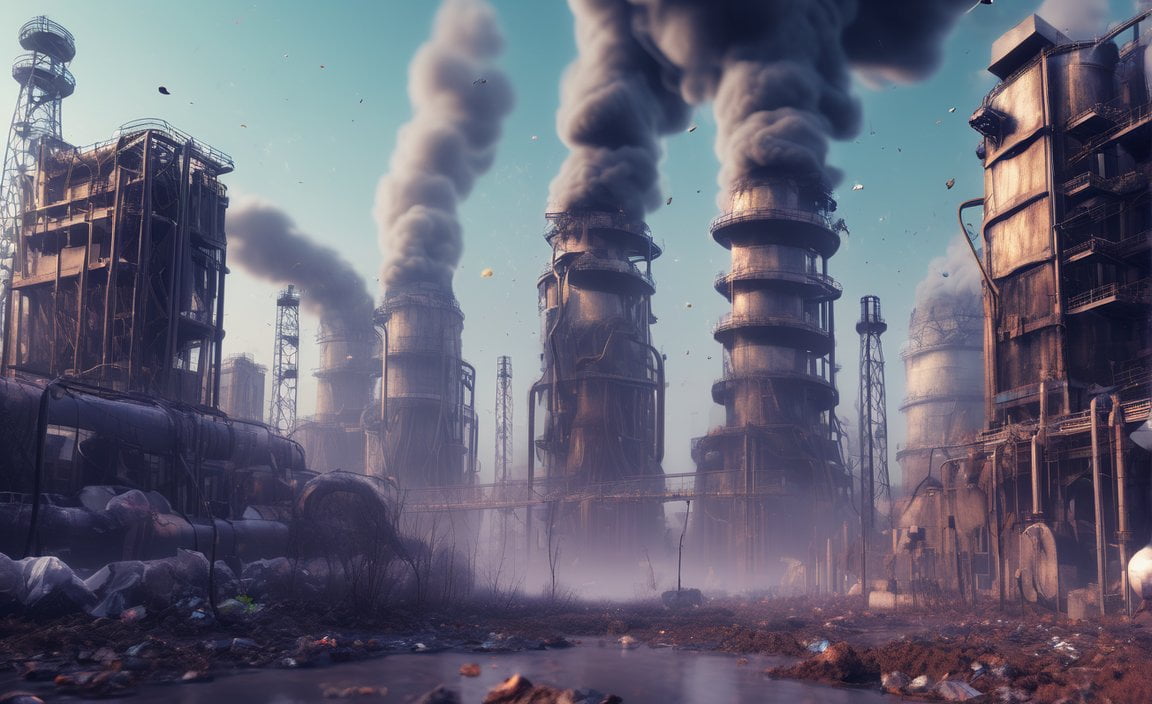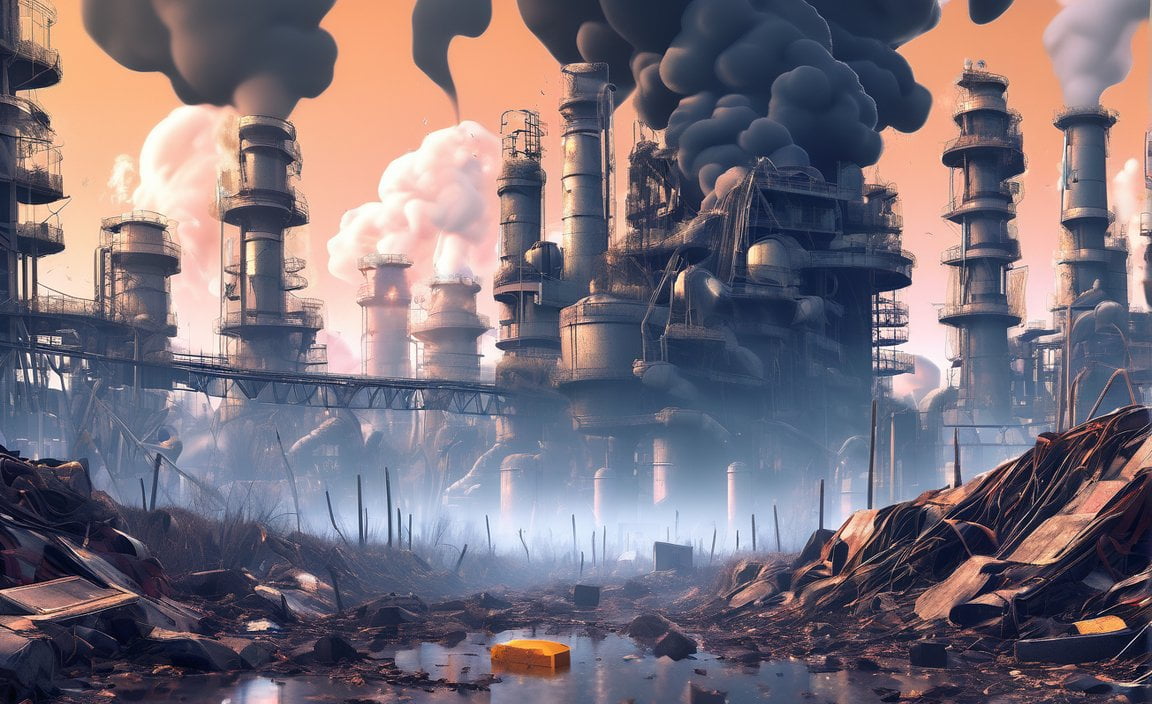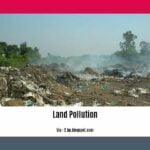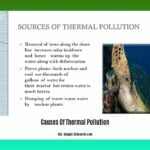Environmental pollution is a pressing concern that affects every living being on our planet. In this article, we will delve into a comprehensive analysis of the five types of environmental pollution. From the air we breathe to the water we drink, the soil that nourishes our crops, the noise that surrounds us, and the insidious presence of plastic waste, these pollutants pose a grave threat to our ecosystem. Join us as we explore the detrimental impacts of these forms of pollution and discover how we can work together to create a cleaner, healthier future for our planet.
Key Takeaways:
- There are five major types of environmental pollution: air, water, soil, light, and noise pollution.
- Air pollution consists of harmful contaminants in the atmosphere, such as smoke, smog, and toxic gases.
- Water pollution occurs when toxic wastes contaminate water bodies like rivers, lakes, and oceans.
- Soil pollution happens when pesticides, chemicals, and heavy metals contaminate the soil.
- Light pollution is excessive or misdirected artificial light that causes glare and light trespass.
- Noise pollution refers to unwanted or harmful sound that interferes with normal activities.
- To learn more about these types of pollution, you can refer to the sources:
- “Types of Pollutants” from Sciencing: source
- “The Top 5 Types of Pollution: Causes and Effects” from bioenviro.org: source
5 Types of Environmental Pollution

In our rapidly changing world, it’s crucial to understand the various forms of environmental pollution that pose a threat to our planet. From the air we breathe to the water we drink, pollution affects every aspect of our lives. In this article, we will delve into the five major types of environmental pollution: air pollution, water pollution, soil pollution, light pollution, and noise pollution. Let’s explore each type in detail:
Air Pollution: The Silent Killer
Air pollution is an invisible enemy that impacts the quality of the air we breathe. It occurs when harmful contaminants, such as smoke, smog, particulate matter, and toxic gases, accumulate in the atmosphere. These pollutants are often released from industrial activities, vehicle emissions, and the burning of fossil fuels. The detrimental effects of air pollution on human health are staggering, including respiratory issues, cardiovascular problems, and an increased risk of cancer.
Water Pollution: Our Precious Resource Under Threat
Water pollution poses a serious threat to our precious water bodies, including rivers, lakes, and oceans. It occurs when toxic substances and pollutants contaminate our water sources, making them unfit for consumption and damaging aquatic ecosystems. Industrial waste, sewage discharge, agricultural runoff, and oil spills are some of the major contributors to water pollution. The consequences are far-reaching, affecting both marine life and human well-being.
Soil Pollution: The Degradation of Earth’s Skin
Soil pollution refers to the contamination of soil with harmful substances, such as pesticides, chemicals, heavy metals, and industrial waste. It disrupts the delicate balance of nutrients and organisms that support plant growth and ultimately affects the entire food chain. Soil pollution can lead to reduced crop yields, loss of biodiversity, and even the accumulation of toxins in our food. Activities like improper waste disposal, excessive use of fertilizers, and industrial practices contribute to this growing concern.
Light Pollution: When the Stars Fade
Light pollution may not be as conspicuous as other forms of pollution, but its impact on our environment and well-being is significant. It occurs when artificial lights are excessive or directed inappropriately, leading to problems like glare, skyglow, and light trespass. Light pollution not only obstructs our view of the night sky and affects astronomical observations but also disrupts the natural behaviors of animals and disturbs their ecosystems. It has implications for human health as well, disrupting sleep patterns and disturbing the circadian rhythm.
Noise Pollution: Unwanted Sounds, Unsettled Minds
Noise pollution is the unwanted or harmful sound that disrupts our environment and interferes with normal activities. It can stem from various sources such as traffic, construction, industrial activities, and even certain recreational activities. Constant exposure to high levels of noise can lead to stress, sleep disturbances, hearing loss, and even cardiovascular problems. Noise pollution not only affects humans but also alters the behavior and habitats of animals.
Now that we have gained a deeper understanding of the five types of environmental pollution, it’s crucial to realize the urgency of addressing these issues. Taking proactive steps towards reducing pollution and implementing sustainable practices can help us create a cleaner, healthier planet for ourselves and future generations.
Sources:
- “Types of Pollutants” from Sciencing: source
- “The Top 5 Types of Pollution: Causes and Effects” from bioenviro.org: source
Here are some interesting topics that you might want to explore:
5 lines about snail: Discover fascinating facts about snails and their unique characteristics.
5 main rivers of Punjab: Dive into the rich history and significance of the five main rivers flowing through Punjab.
5 ways to reduce plastic pollution: Learn simple yet effective methods to combat plastic pollution and protect our environment.
Feel free to click on any of the links above to delve deeper into these subjects!
Water Pollution: Causes, Types, and Effects

Water pollution is a pervasive environmental issue that poses threats to both human health and the planet’s ecosystems. Contaminated water bodies, such as rivers, lakes, oceans, and groundwater, contain harmful substances that make the water unfit for use and disrupt aquatic life.
Types of Water Pollution
Wastewater Pollution: Wastewater, including domestic sewage and industrial/agricultural runoff, contains various pollutants like metals, solvents, and toxic sludge. its indiscriminate disposal contaminates water bodies.
Oil Pollution: Though major oil spills grab headlines, most oil pollution in seas is caused by consumer activities like improper disposal of oil and gasoline, leading to water contamination.
Radioactive Substances: Water pollution is intensified by radioactive waste generated from uranium mining and nuclear power plants. The emitted radiation exceeds natural levels, posing significant risks to human health and the environment.
Causes of Water Pollution
Industrial Discharges: Industries release harmful chemicals, heavy metals, and toxic substances into water bodies through inadequate wastewater management and improper waste disposal.
Agricultural Runoff: The use of fertilizers, pesticides, and herbicides in agriculture contributes to water contamination as these chemicals get washed into rivers and streams through runoff.
Sewage and Septic Systems: Improperly treated sewage from residential areas and malfunctioning septic systems release harmful bacteria, viruses, and pollutants into water sources.
Oil and Fuel Leaks: Oil spills from offshore drilling rigs, tanker ships, and transportation vehicles lead to severe environmental damage and contaminate water bodies.
Effects of Water Pollution
Threat to Human Health: Contaminated water can cause various waterborne diseases such as cholera, typhoid, and gastrointestinal illnesses. Exposure to toxic chemicals in polluted water can result in cancer, reproductive issues, and neurological disorders.
Ecosystem Disruption: Water pollution disrupts aquatic ecosystems by depleting oxygen levels, leading to the death of marine life. Excessive nutrients from fertilizers cause harmful algal blooms, negatively impacting water quality and aquatic biodiversity.
Loss of Biodiversity: Pollution affects the delicate balance of ecosystems, leading to the decline of certain species and the disruption of food chains. This loss of biodiversity can have far-reaching ecological consequences.
Solutions and Prevention
Improved Wastewater Treatment: Implementing advanced wastewater treatment technologies can remove contaminants and ensure the safe disposal or reuse of wastewater.
Regulation and Enforcement: Governments need to enforce strict regulations on industrial and agricultural practices to reduce pollution and impose penalties for violations.
Promotion of Sustainable Agriculture: Encouraging organic farming practices and reducing reliance on chemical fertilizers and pesticides can help mitigate agricultural runoff.
Public Awareness and Education: Raising awareness about the impacts of water pollution and promoting responsible water usage can drive behavioral changes and foster a culture of conservation.
Water pollution and its causes and effects demand urgent attention. Governments, industries, and individuals should take proactive steps to prevent further pollution and protect water resources for future generations.
References:
- National Resources Defense Council (NRDC). (n.d.). Water Pollution Definition – Types, Causes, Effects – NRDC
- Britannica. (2023, November 22). Water pollution | Definition, Causes, Effects, Solutions, Examples
Soil Pollution and Its Causes and Effects
Soil pollution is a critical environmental issue that has detrimental effects on both the health of our planet and our own well-being. By understanding the causes and effects of soil pollution, we can take proactive steps towards reducing its impact and creating a healthier environment.
Causes of Soil Pollution
Erosion: Soil erosion, caused by factors like wind and water, leads to the loss of valuable topsoil and essential nutrients.
Loss of Organic Carbon: Human activities, such as deforestation and intensive agriculture, contribute to the depletion of organic carbon, essential for soil fertility.
Increasing Salt Content: The accumulation of salts in soil, often due to improper irrigation practices, reduces soil fertility and adversely affects crop growth.
Compacting: Heavy machinery and excessive foot traffic can compact the soil, limiting the movement of air, water, and nutrients.
Acidification: Acid rain, caused by air pollution, can lead to soil acidification, impacting the pH levels and affecting plant growth.
Chemical Contamination: Industrial waste, excessive use of pesticides and fertilizers, and poor waste management contaminate the soil with harmful chemicals and heavy metals.
Effects of Soil Pollution
Threat to Human Health: Consuming crops grown in polluted soil can expose humans to harmful chemicals, leading to various health issues such as cancers, neurological disorders, and birth defects.
Impact on Ecosystems: Soil pollution disrupts natural ecosystems, affecting the health of plants, animals, and microorganisms. This disruption can lead to a loss of biodiversity and imbalance in ecological processes.
Water Quality: Pollutants present in contaminated soil can leach into groundwater, rivers, and streams, contaminating water sources and posing a risk to aquatic life and human consumption.
Agricultural Productivity: Soil pollution reduces soil fertility, resulting in lower crop yields and decreased agricultural productivity. This not only affects food production but also impacts the economic livelihoods of farmers.
Loss of Biodiversity: Soil pollution can lead to a decline in soil-dwelling organisms, which play crucial roles in nutrient cycling and soil health. This loss of biodiversity has cascading effects on ecosystems.
To address soil pollution, it is essential to implement sustainable practices and take proactive steps to reduce contamination. Proper waste management, responsible use of fertilizers and pesticides, adoption of organic farming methods, and promoting soil conservation techniques can help mitigate the impact of soil pollution and restore soil health.
Key Takeaways:
- Soil pollution is caused by erosion, loss of organic carbon, increasing salt content, compacting, acidification, and chemical contamination.
- It negatively impacts human health, ecosystems, agricultural productivity, water quality, and biodiversity.
- Solutions to reduce soil pollution include proper waste management, responsible agricultural practices, organic farming methods, and soil conservation techniques.
References:
- ResearchGate: Soil pollution and its causes and effects
- Britannica: Soil pollution
Noise pollution and its causes and effects
Noise pollution refers to the presence of excessive or unwanted noise that can have negative effects on human health, animal well-being, and the environment. It is a growing concern worldwide, particularly in urban areas. Understanding the causes and effects of noise pollution is crucial in order to address this issue effectively.
Neighborhood Noise
One type of noise pollution is neighborhood noise, which is caused by various sources, including household gadgets and utensils. Common sources of neighborhood noise include musical instruments, transistors, and loudspeakers. This type of noise can cause disturbances and annoyance to individuals living in close proximity.
Industrial Noise
Another significant contributor to noise pollution is industrial noise. It refers to high-intensity sound produced by heavy industrial machines and is particularly prevalent in industrial areas. Prolonged exposure to industrial noise can lead to hearing loss, affecting around 20% of individuals.
Sources of industrial noise pollution include construction sites, mining operations, and the building of bridges, dams, and other structures.
To tackle the issue of noise pollution, various prevention measures can be implemented:
Noise barriers: Constructing physical barriers, such as soundproof walls, to minimize the transmission of noise.
Regulation and enforcement: Implementing and enforcing noise control regulations to restrict noise levels in residential and public areas.
Public awareness and education: Raising awareness about the adverse effects of noise pollution and promoting responsible noise practices.
Urban planning and design: Incorporating noise reduction strategies into urban planning and designing quieter neighborhoods and buildings.
Technology advancement: Developing noise-reducing technologies and equipment to minimize noise emissions from industrial processes and transportation.
Noise pollution is a significant environmental issue with detrimental effects on human health, animal well-being, and the overall quality of the environment. By implementing prevention measures and raising awareness, we can work towards reducing noise pollution and creating a healthier and more peaceful environment for all.
Sources:
– BYJU’S: Noise Pollution – Definition, Types, Causes, Prevention
– National Geographic Society: Noise Pollution – National Geographic Society
FAQ
Q1: What are the five main types of environmental pollution?
A1: The five main types of environmental pollution are air pollution, water pollution, soil pollution, light pollution, and noise pollution.
Q2: What is air pollution?
A2: Air pollution refers to the presence of harmful contaminants in the atmosphere, such as smoke, smog, particulate matter, and toxic gases.
Q3: What is water pollution?
A3: Water pollution is the contamination of water bodies, such as rivers, lakes, and oceans, due to the introduction of toxic wastes.
Q4: What is soil pollution?
A4: Soil pollution occurs when pollutants like pesticides, chemicals, and heavy metals contaminate the soil.
Q5: What is noise pollution?
A5: Noise pollution refers to the presence of unwanted or harmful sound in the environment that interferes with normal activities.
- China II Review: Delicious Food & Speedy Service - April 17, 2025
- Understand Virginia’s Flag: History & Debate - April 17, 2025
- Explore Long Island’s Map: Unique Regions & Insights - April 17, 2025
















